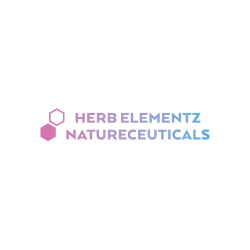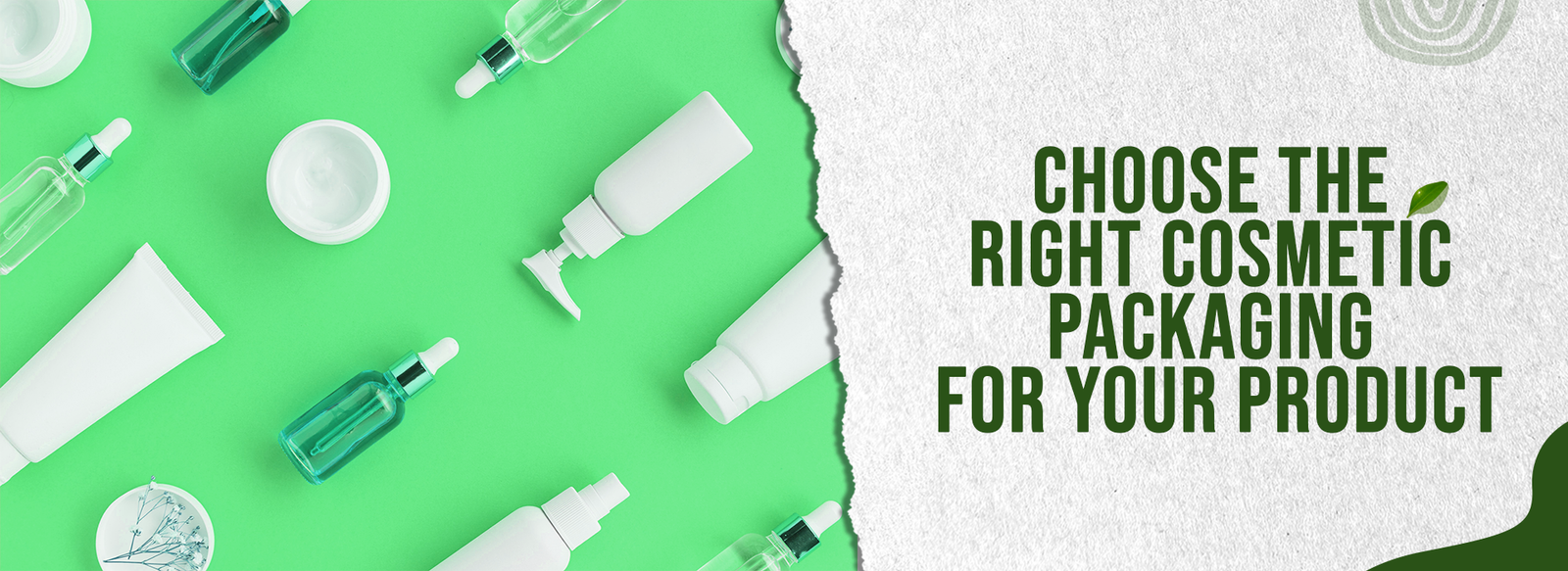
Choose the Right Cosmetic Packaging for Your Product: Glass, PET, HDPE, Airless, Tubes, Jars
Introduction
Choosing the right packaging for your cosmetic products is crucial for preserving their quality, enhancing their appeal, and ensuring customer satisfaction. With various options like glass, PET, HDPE, airless tubes, and jars, it can be challenging to determine the best packaging solution for your product. This guide will help you understand the advantages and disadvantages of each packaging type so you can make an informed decision.
Understanding Cosmetic Packaging
Definition and Role of Cosmetic Packaging
Cosmetic packaging refers to the containers and materials used to protect, preserve, and present cosmetic products. It plays a vital role in maintaining the product’s integrity, preventing contamination, and attracting customers through its design and functionality.
Key Factors to Consider in Cosmetic Packaging
When choosing cosmetic packaging, consider material durability, product compatibility, ease of use, aesthetic appeal, environmental impact, and cost. These elements will help you select packaging that meets your product’s needs and your brand’s goals.
Advantages of Glass Packaging
Aesthetic Appeal: Glass packaging offers a high-end, luxurious look that can enhance the perceived value of your cosmetic products. Its transparency allows customers to see the product.
Recyclability and Sustainability: Glass is highly recyclable, making it an environmentally friendly packaging option. It can be reducing the environmental footprint.
Chemical Resistance: Glass is chemically inert, meaning it does not react with cosmetic formulations. This ensures the product’s stability and longevity.
Disadvantages of Glass Packaging
Fragility: Glass is prone to breaking or cracking, leading to product loss and safety hazards. This fragility can be a drawback, especially during transportation and handling.
Weight and Shipping Costs: Glass is heavier than other packaging materials, increasing shipping costs and making it less convenient for consumers.
Ideal Products for Glass Packaging
Glass packaging is ideal for high-end skincare products, perfumes, and serums that benefit from a premium presentation and require chemical stability.
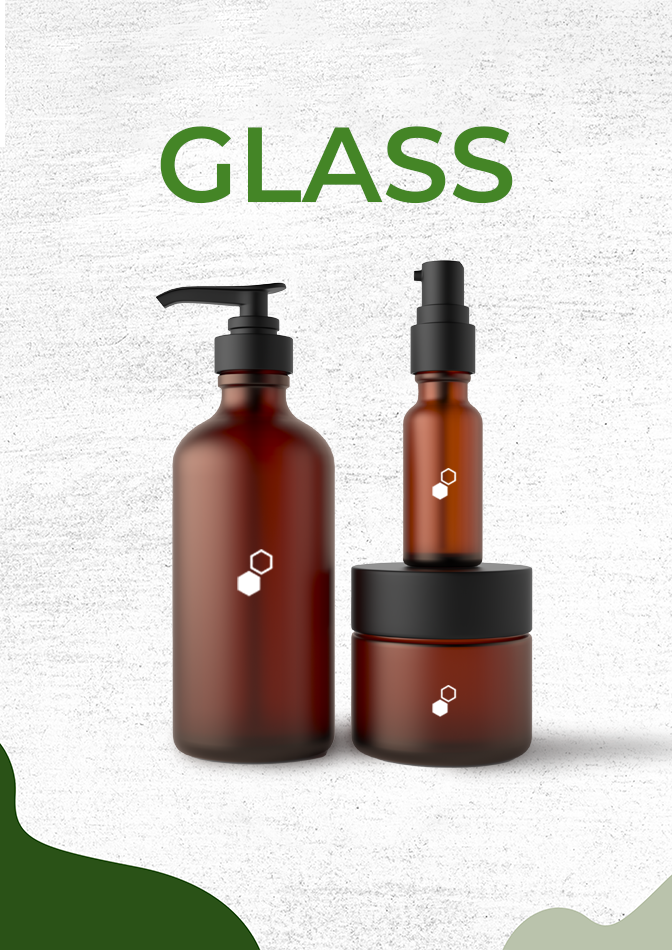

Advantages of PET (Polyethylene Terephthalate) Packaging
Lightweight and Durable: PET packaging is lightweight and durable, making it easy to handle and transport. Its strength ensures that it can withstand impacts without breaking.
Transparency, Gloss, Matt, and various color effect options: PET offers excellent transparency and gloss, additionally, customized color options and effects can be opted in PET packaging, allowing the product to be visible and giving it an attractive appearance on the shelf.
Recyclability: PET is recyclable, contributing to environmental sustainability. It can be converted into various products through recycling processes.
Disadvantages of PET Packaging
Environmental Concerns: Despite its recyclability, PET is derived from petroleum, raising concerns about its environmental impact and the sustainability of its production.
Ideal Products for PET Packaging
PET packaging suits many products, including shampoos, conditioners, lotions, and other personal care items.
Advantages of HDPE (High-Density Polyethylene) Packaging
Strength and Rigidity: HDPE is known for its strength and rigidity, providing excellent protection for cosmetic products. It is resistant to impacts and can maintain its shape under stress.
Chemical Resistance: HDPE is resistant to a wide range of chemicals, ensuring that it does not react with cosmetic formulations and alter their properties.
Cost-Effectiveness: HDPE is cost-effective, making it a popular choice for mass-market cosmetic products. It offers a good balance between performance and price.
Color Choices & Textures: HDPE manufacturing technology advancement has provided with multiple colour options and latest texture finish which can place HDPE in the premium packaging segment
Disadvantages of HDPE Packaging
Limited Transparency: HDPE is typically opaque, limiting the visibility of the product inside. This can be a disadvantage for products that benefit from being seen by consumers.
Environmental Impact: HDPE is not as easily recyclable as other plastics, and its production has a significant environmental footprint due to the use of fossil fuels.
Ideal Products for HDPE Packaging
HDPE packaging is ideal for products that require durability and chemical resistance, such as creams, lotions, and other skincare products.


Advantages of Airless Packaging
Protection from Air and Contaminants: Airless packaging prevents air and contaminants from entering the container, preserving the integrity and effectiveness of the product. This is particularly important for sensitive formulations.
Enhanced Product Shelf Life: Airless packaging extends the shelf life of cosmetic products by preventing exposure to air, ensuring they remain fresh and effective for longer periods.
Precise Dispensing: Airless packaging offers precise and controlled dispensing, reducing product waste and ensuring the correct amount is used each time.
Luxury Appeal: Airless Packaging is one of the most luxurious ranges of packaging in the industry, additionally, the user experience is excellent when handling products packed in Airless packaging
Disadvantages of Airless Packaging
Higher Cost: Airless packaging is generally more expensive to produce than traditional packaging options, which can increase the overall cost of the product.
Complexity in Design and Manufacturing or Procure: The design and manufacturing of airless packaging are more complex, requiring specialized equipment and processes, which can be a barrier for some brands. Vendors from South East Asian Region ideally fulfil procurement of ready to use Airless packaging
Ideal Products for Airless Packaging
Airless packaging is ideal for high-end skincare products, serums, and other formulations requiring air protection and precise dispensing.
Advantages of Jar Packaging
Ease of Access to Product: Jars offer easy access to the product, allowing consumers to use as much as needed and making them suitable for thick creams, waxes, butters and balms.
Versatility in Sizes and Designs: Jars come in various sizes and designs, providing options for different product quantities and branding opportunities.
Aesthetic Appeal: Jars can be designed to look elegant and attractive, enhancing the overall presentation of the product.
Various Material Options: Jars are available in PET, HDPE, Glass & Airless options, depending on formulation type and pack size requirement, a suitable and appealing jar option can be selected.
Disadvantages of Jar Packaging
Exposure to Air and Contaminants: Jars expose the product to air and contaminants each time they are opened, affecting its shelf life and quality.
Potential for Product Contamination: Frequent exposure to air and the need to dip fingers into the jar can lead to contamination, which concerns some consumers.
Ideal Products for Jar Packaging
Jar packaging is suitable for thick creams, balms, masks, and other products that require easy access and a luxurious presentation.
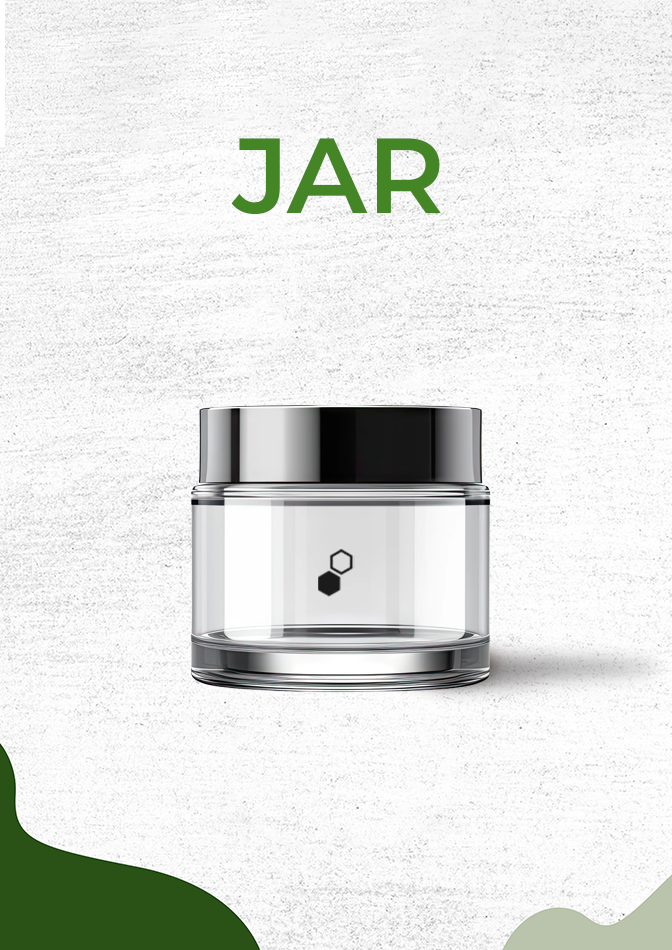

Advantages of Tube Packaging
Convenience and Ease of Use: Tube packaging is convenient and easy to use. It allows consumers to dispense the product without hassle, making it ideal for on-the-go applications.
Portability: Tubes are lightweight and portable, making them a popular choice for travel products and those intended for frequent use.
Versatility in Design: Tube packaging offers versatility in design, allowing for various shapes, sizes, and decoration options to enhance brand appeal.
Disadvantages of Tube Packaging
Recyclability Issues: Depending on the materials used, tubes can be challenging to recycle, contributing to environmental concerns.
Ideal Products for Tube Packaging
Tube packaging is ideal for creams, lotions, gels, cleansers, and other formulations that benefit from easy dispensing and portability.
Types of Tubes
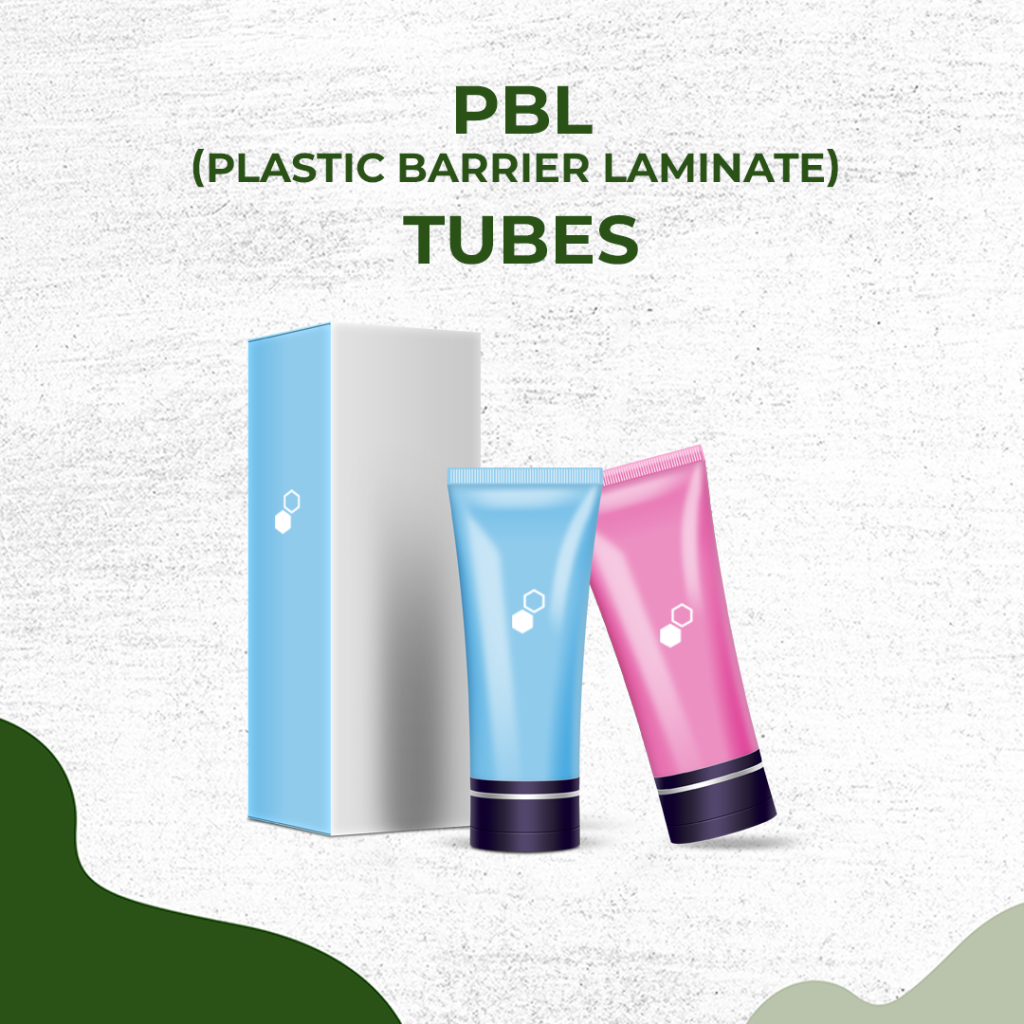
Material: Made from multiple layers of plastic films, with an additional barrier layer (often EVOH) that provides enhanced protection.
Ideal Use:
Perfect for packaging skincare products, lotions, creams, and other formulations that require protection from external elements to maintain their efficacy and shelf life.
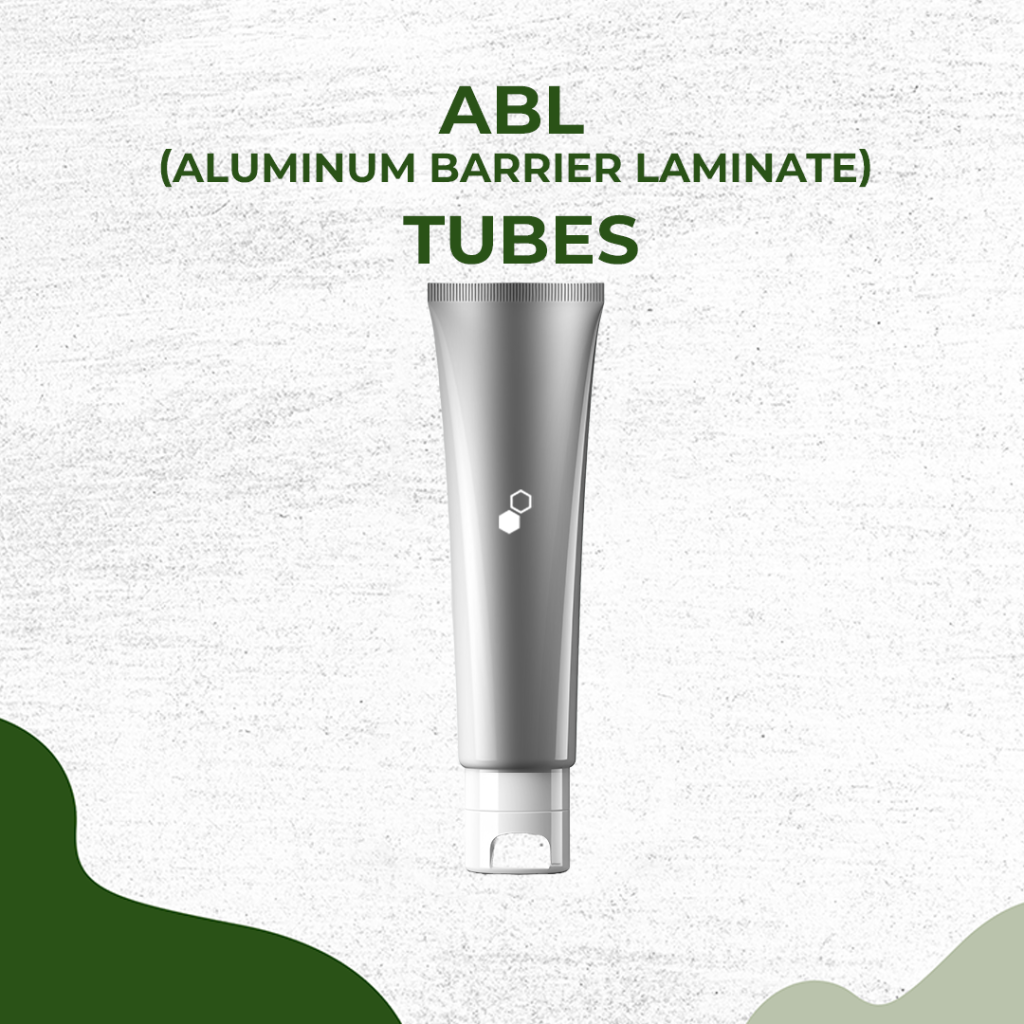
Material: Composed of multiple plastic and aluminum foil layers, providing robust barrier protection.
Ideal Use:
It is ideal for products like toothpaste, medicated creams, and specific cosmetic formulations that require robust protection from environmental factors.
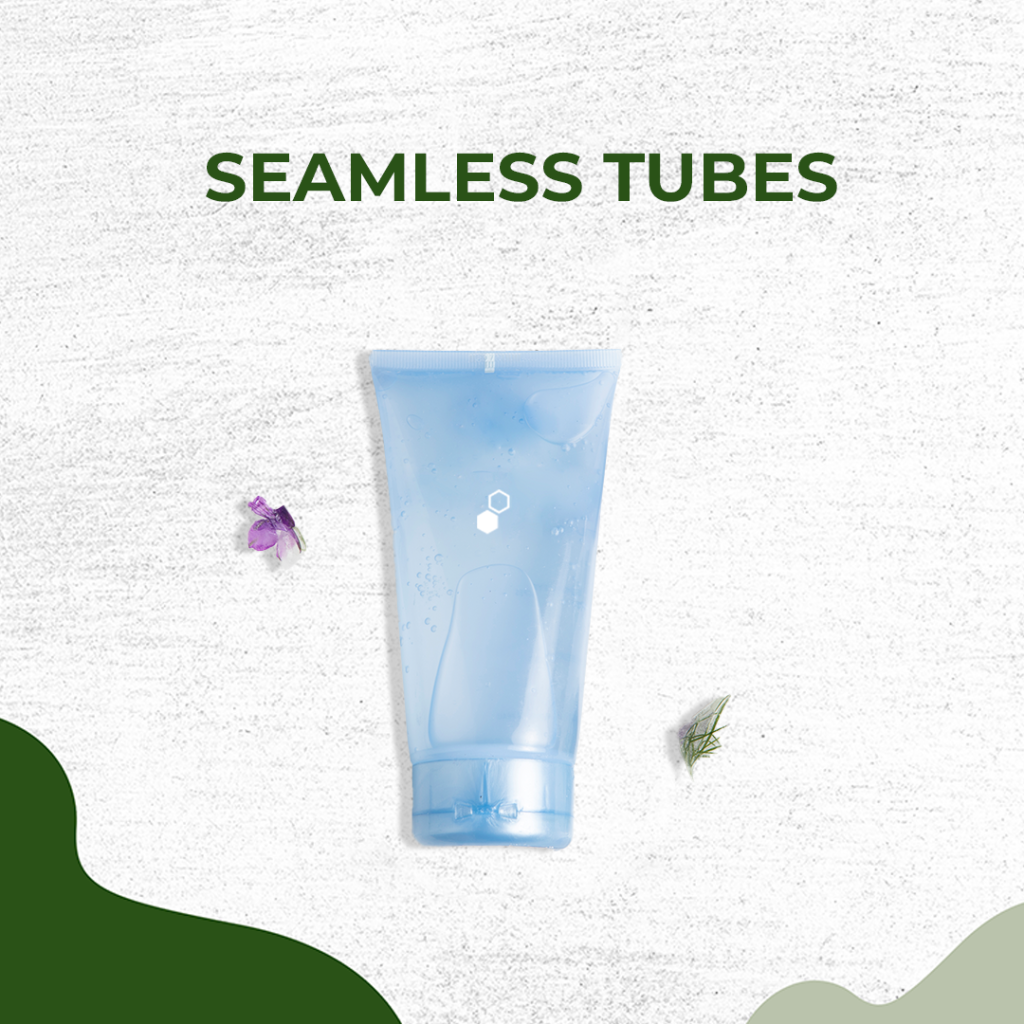
Material: Typically made from a single piece of plastic or aluminum with no seams or joints.
Ideal Use:
Suitable for high-end cosmetics, lotions, gels, and other products where functionality and aesthetics are crucial.
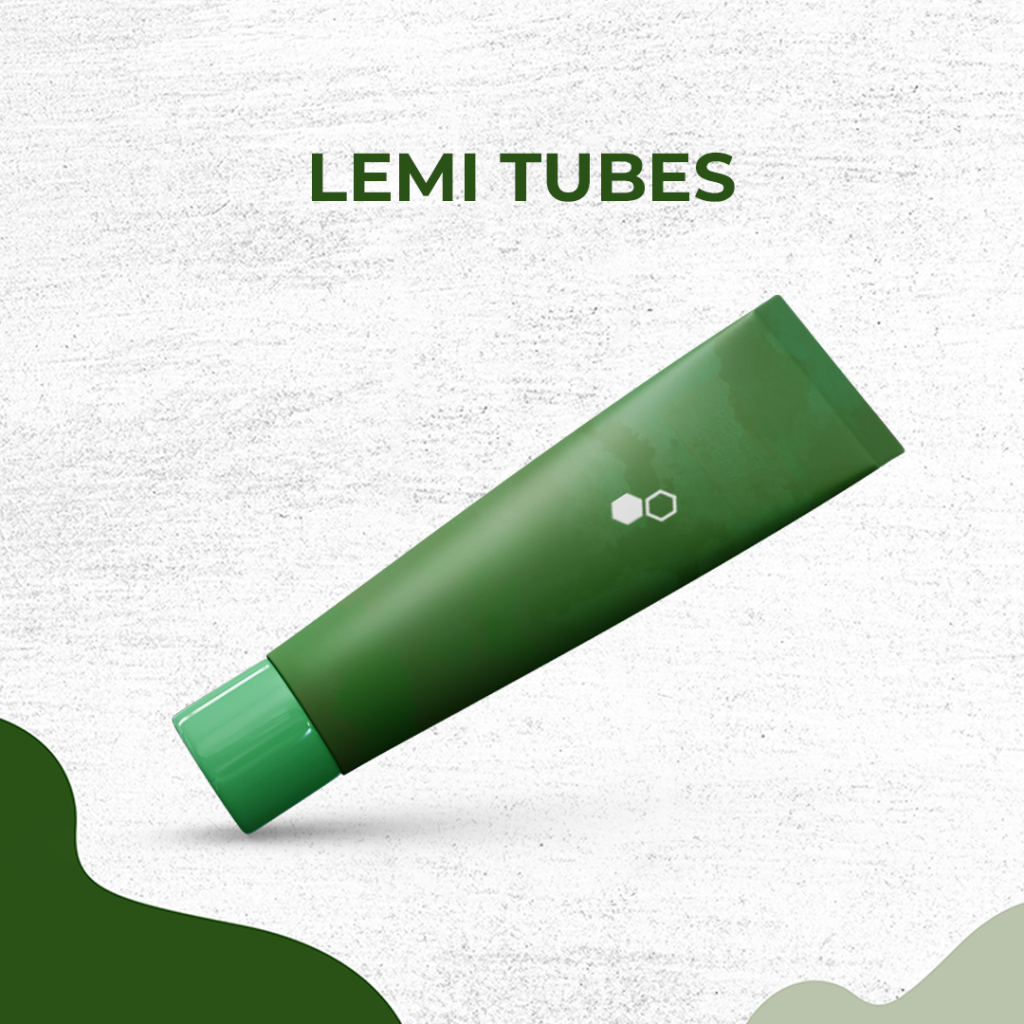
Material: Made using a unique laminate technology that often includes layers of plastic and aluminum.
Ideal Use:
It is perfect for a wide range of cosmetic products, including creams, gels, and lotions, particularly those requiring extended shelf life and premium presentation.
Sustainability in Cosmetic Packaging
Importance of Sustainable Packaging: Sustainable packaging is crucial for reducing environmental impact and meeting consumer demand for eco-friendly products. It involves using materials and practices that minimize waste and promote recycling.
Eco-Friendly Materials and Practices: Eco-friendly materials include biodegradable plastics, recycled materials, and sustainably sourced paper. Practices such as reducing packaging size, using refillable containers, and promoting recycling help enhance sustainability.
Trends in Sustainable Cosmetic Packaging: Current trends include using biodegradable and compostable materials, innovative refill systems, and minimalist packaging designs that reduce material use and waste.
Customization and Branding
Importance of Custom Packaging for Branding: Custom packaging plays a vital role in branding. It helps products stand out on the shelf and creates a memorable customer experience. It reflects the brand’s identity and values.
Options for Customization: Customization options include unique shapes, colors, printing techniques, and finishes. Brands can also incorporate special features such as embossing, debossing, and custom closures.
Impact of Packaging Design on Consumer Perception: Packaging design significantly influences consumer perception, affecting their purchasing decisions. Well-designed packaging can convey quality, luxury, and trustworthiness, enhancing the brand image.
Cost Considerations
Balancing Quality and Cost: When choosing cosmetic packaging, it’s essential to balance quality and cost. High-quality packaging can justify a higher price point. Still, it is crucial to ensure it aligns with the target market and product positioning.
Factors Influencing Packaging Costs: Packaging costs are influenced by material choice, design complexity, production volume, and additional features such as custom printing and exceptional finishes.
Cost-Saving Tips for Cosmetic Packaging: To save on packaging costs, consider using standard sizes and shapes, simplifying designs, ordering in bulk, and working with suppliers to negotiate better rates.
Conclusion
Innovations and Future Trends
The cosmetic packaging industry continues to evolve with technological advancements and consumer-driven trends. Innovations like innovative packaging, which integrates QR codes for product information and augmented reality experiences, enhance consumer engagement and product transparency. Future trends are expected to focus on sustainable materials, personalized packaging solutions, and advancements in packaging technology that improve functionality and user experience.
Frequently Asked Questions (FAQs)
The most sustainable materials for cosmetic packaging include glass, various plastics derived from new resources, and recycled materials. These options minimize environmental impact through recyclability and reduced resource consumption.
When selecting packaging, consider product compatibility, durability, aesthetic appeal, sustainability, and regulatory compliance. These criteria will help you determine the most suitable packaging solution for your product needs and brand objectives.
Airless packaging provides several benefits, including prolonged product shelf life when the product is under use by preventing exposure to air and contaminants. It also offers precise dispensing, reduces product waste, and enhances consumer convenience, making it ideal for sensitive formulations and high-value products. Adds a luxurious touch final product.
Yes, PET (Polyethylene Terephthalate) packaging is widely recyclable. It can be repurposed into various products, including new packaging materials and textiles. Recycling PET helps conserve natural resources and reduces waste in landfills, supporting sustainable packaging practices.
Packaging plays a critical role in preserving the quality and efficacy of cosmetic products. Effective packaging shields products from environmental factors such as air, light, and moisture, which can degrade formulations over time. Choosing packaging that minimizes exposure to these elements helps maintain product stability and extends shelf life.
Regulatory requirements for cosmetic packaging encompass safety, labeling accuracy, and environmental impact assessments. Compliance with these regulations ensures product safety, consumer protection, and legal conformity. It’s essential to stay informed about regional packaging laws and collaborate with industry experts to navigate regulatory complexities effectively. For the latest regulatory compliance check with your country’s concerned department.
To enhance the sustainability of your cosmetic packaging, consider using recyclable materials, opting for biodegradable options, reducing packaging size and weight, implementing refillable packaging systems, and promoting recycling initiatives among consumers. These practices minimize environmental footprint and align your brand with eco-conscious consumer preferences.
PET (Polyethylene Terephthalate) packaging is lightweight, transparent, and commonly used for beverages and personal care products. HDPE (High-Density Polyethylene) packaging is more robust and opaque and suitable for products requiring more vital protection against moisture and chemicals. Each material offers distinct advantages based on specific packaging requirements and consumer preferences.

